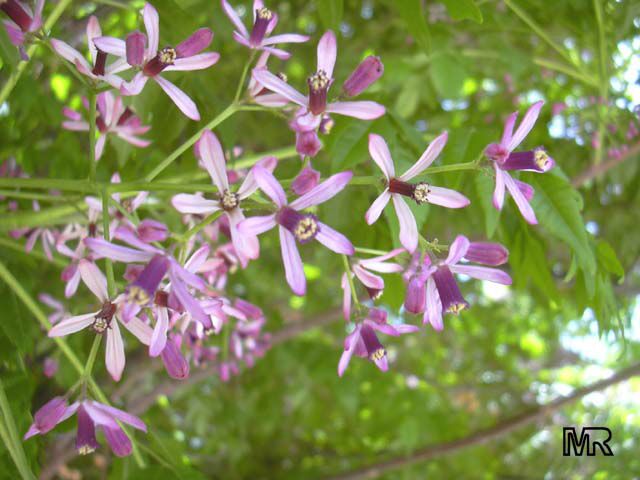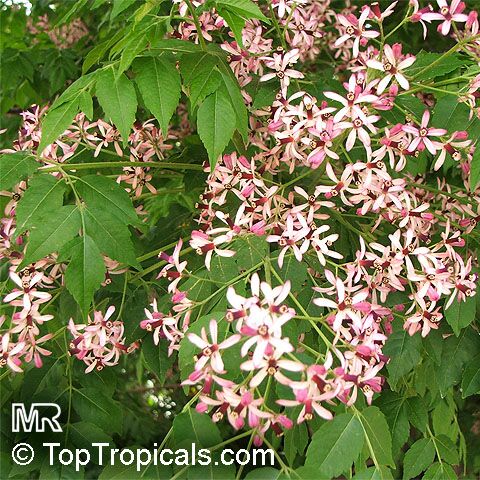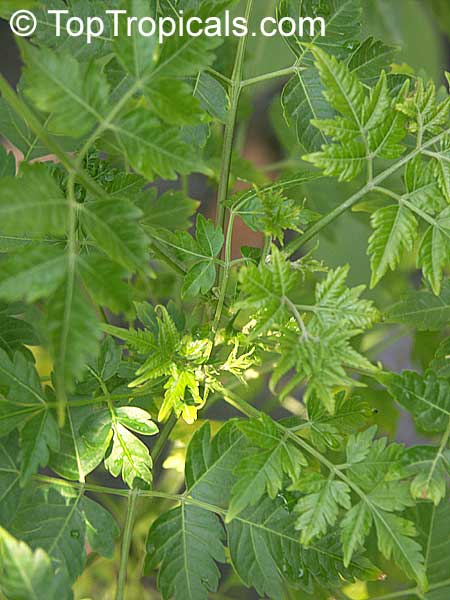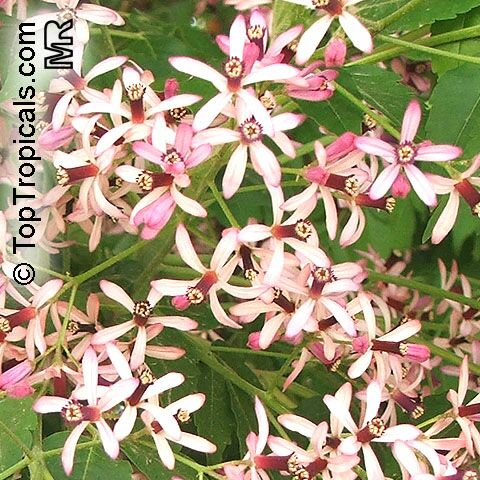Melia azedarach - Bead Tree

Scientific name: Melia
azedarach
Family: Meliaceae
Common names: Bead Tree, Persian Lilac, Chinaberry Tree, Indian Lilac,
Pride of India, White Cedar, Vaymboo (Malayalam), Drek, Bakain, Media
Nim (Vern.); Pejri (Mar.), Mallay Vembu (Tarn.)
Origin: India

The lovely Bead Tree is somewhat similar to the Nim in appearance and takes the place of that tree in the Northern parts of India. Both have compound leaves with narrow, serrate-edged leaflets terminating in long points but those of the Bead Tree are smaller, lack the sythe-like curve and are subdivided at the base into several pinnae bearing five or seven leaflets.
The Bead Tree is indigenous to parts of N. India and Burma and is now
cultivated in all the sub-tropical regions of the world.
Melia is the Greek name of the Ash, but is not very appropriate as there
is only superficial resemblance between the Bead tree and the Ash. Azedarach
is from the Persian azad-darakht.
It is a medium-sized tree, fast-growing and attaining up to 40 feet in height in a few years, but its beauty is short-lived; at the age of about 20 years it commences to die off. The bark is dark grey-brown cracked vertically by long furrows.
In the winter the leaves fall and the tree is naked except for the masses •of cherry-like fruits, which, when ripe and lusciously golden, attract birds in large numbers. By March the spring foliage appears, followed immediately by the beautiful sprays of tiny, lilac blooms. Growing high up on the tree, they draw attention to their presence by their delightful fragrance - powerful yet delicate. One looks up to see a multitude of little nodding blossoms loosely clustered on long-stemmed sprays. Each flower has five or six narrow mauve or white petals which on opening reveal a deep purple tube; this is actually a cohesion of the stamens.
After the monsoon the fruits form and those which are not eaten by birds eventually become very wrinkled. Each fruit contains five seeds which, having a natural perforation through the centre, make ideal beads. Because of this characteristic the tree has become a popular exotic in Southern Europe where the beads are made into rosaries. Although principally an ornamental tree it has several uses.
Large doses of the fruits are poisonous but, combined with the leaves
they have a certain value as poultices in cases of headache, or neuralgia.
A valuable oil is procured from the roots and the timber, though not
often used, is handsomely marked and easy to work.



